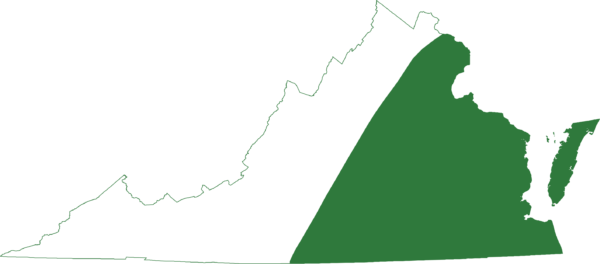It’s #FrogFriday and this week is the Southern Leopard Frog’s time to shine. This relatively large frog (2 – 4-½ inches in length) may be found throughout Virginia’s Coastal Plain and in scattered locations of the Piedmont. It’s a spotted frog, with variable colors of gray, tan or green. Spots are scattered irregularly down the body and may be brown or black. The creamy white dorsolateral folds (the two stripes running down its back) stand out against its darker skin as well as the light stripes running along its mouth. Another marking to look for, is a distinct light spot in the center of its eardrums (the circles on the side of its head) also called the tympanum. The Southern Leopard Frog also has a long, pointed head, which gives it the second word in its scientific name, Lithobates sphenocephalus, meaning “wedge headed.”
Peak breeding season for the Southern Leopard Frog is mid-February – early April, during which they breed at a wide variety of ephemeral and permanent freshwater wetlands. They also may enter slightly brackish coastal marshes. Females lay up to 3,000 eggs in an egg mass attached to submerged vegetation. In the early breeding season, communal nesting may occur. In the summer, the Southern Leopard Frog may be found foraging some distance from water where there are enough plants providing shelter and shade. They feed primarily on insects, but also on other arthropods and worms.
The call of the Southern Leopard Frog is a chuckling, guttural trill, which has been described as the sound made when coarsely rubbing an inflated balloon. Southern Leopard Frogs call primarily during their peak breeding season, but they also may be heard on rainy cool nights in the fall.
Call of the Southern Leopard Frog

Map of southern leopard frog range

